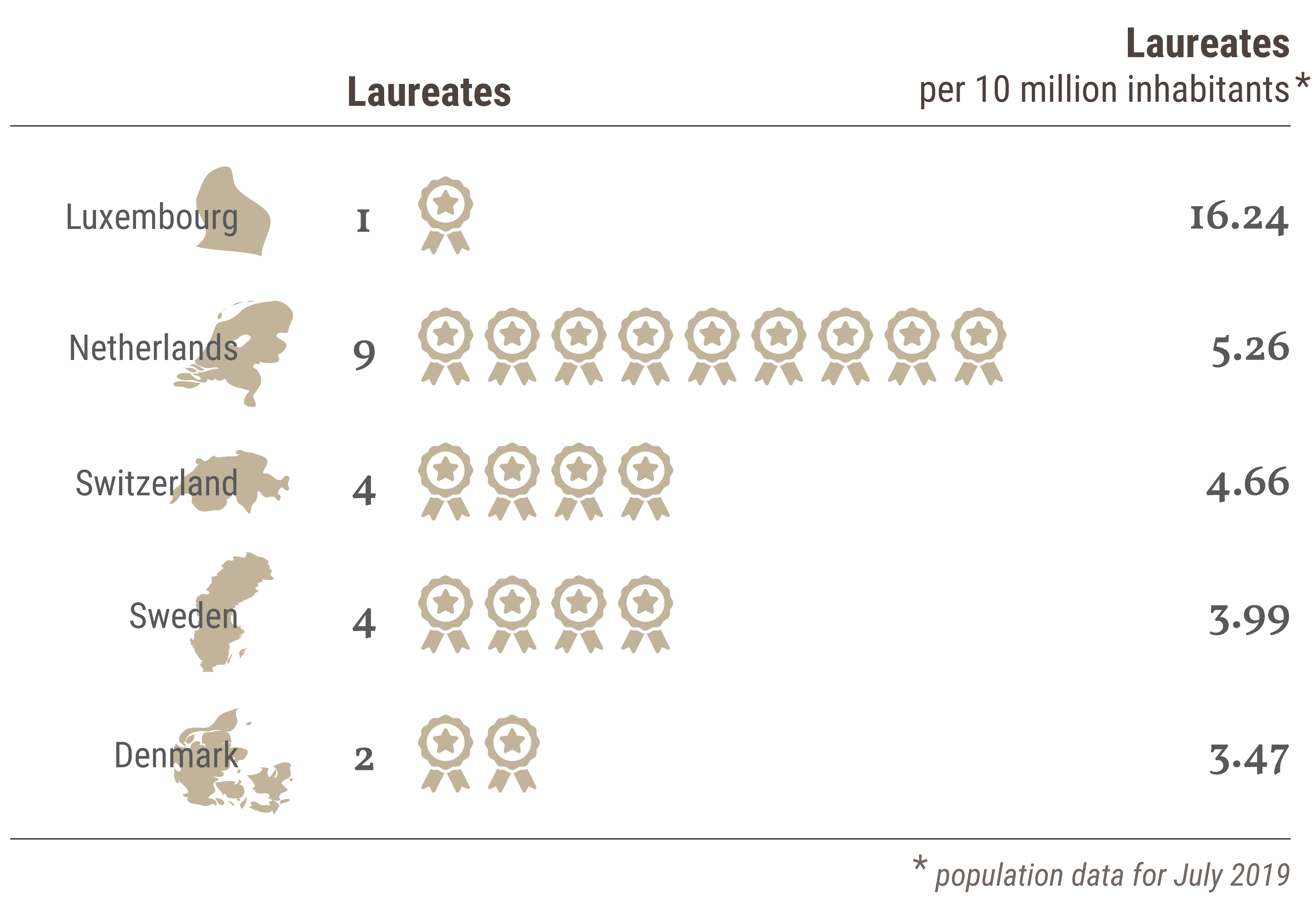
On Tuesday, October 8, the new laureates for the Nobel Prize in Physics will be announced. This year, the Prize will be awarded for the 113th time since its inception in 1901.
Six times the Nobel Prize was not awarded. In 1916 and between 1940 and 1942, the World Wars were the main reason for this. In 1931 and 1934, the Nobel Committee did not consider any works were important or significant enough to meet the criteria for the award.

In recent years, the Nobel Prize in Physics was awarded to at least two, but often three laureates each year. This trend has intensified during the past decades. In fact, since the second World War, the average number of laureates per year was 2.2. In the period before the War, it was only 1.2.
The last time the Prize was awarded to a single laureate was in 1992, when Georges Charpak won the Prize for "his invention and development of particle detectors, in particular the multiwire proportional chamber".

Not all continents are equal. The data shows that you have the highest chance of winning a Nobel Prize in Physics if you are born in Europe (48%) or North America (36%). Africa and Oceania have produced only 2 laureates each. None of the laureates were born in South America.

Looking at the laureates' birth places on a map, we see strong clusters in Western Europe, the American East Coast, and Japan. New York has some particularly fertile ground: 17 laureates were born here.

Of course, this map might give a distorted image, as Europe, Japan and the American East Coast are densely populated areas. Correcting for population, we get the following top 5 countries with the highest number of Physics Nobel Prize winners per capita:

The average laureate of the Nobel Prize in Physics is a white male of 56 years old. Obviously, there is no such thing as an 'average Nobel Prize winner'. However, it is safe to say your chances of winning are pretty slim if you are a woman. In the past 118 years, only 3 women have won the Nobel Prize in Physics - versus 206 men.

Looking at age, we can safely say that laureates are getting older and older. Well, of course they are, just like all of us, but the age at which laureates receive their prize is going up. In the period before 1960, the average age of a laureate was 47, with William Lawrence Bragg being the youngest winner at the age of 25. However, since 1960, the average age has gone up to 61 years. In 2018, Arthur Ashkin was the oldest laureate to ever receive a Nobel Prize (in any field) at the age of 96.

Is it possible to win the Nobel Prize in Physics twice in your career? As it turns out, yes, this is possible. Lucky bastard John Bardeen has won the prize twice: once in 1956, for his research on the transistor effect, and once in 1972, for his role in the theory of superconductivity. Congratulations, John!
